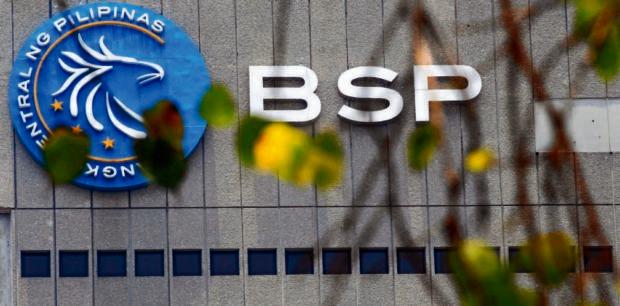
Bangko Sentral ng Pilipinas (File photo / Philippine Daily Inquirer)
The amount of dollars spent by the Philippines will outstrip its total dollars earnings by a significantly higher gap this year than government planners’ already pessimistic projections, according to the latest data from the Bangko Sentral ng Pilipinas (BSP) revealed on Friday.
In a press briefing, BSP officials revealed that they expect the country’s balance of payments — the aggregate net value of all transactions between the local economy and the rest of the world — to end 2018 at a deficit of $5.5 billion.
This marks a 266-percent increase in the expected net dollar outflows from the $1.5-billion yearend deficit the central bank projected just six months ago which was, itself, already an adjusted projection from the original expectation of a $1-billion deficit for 2018.
This gap was attributed to the country’s yawning trade deficit as the economy imported more goods and services to help fuel the growing economy, amid only a modest performance turned in by the Philippines’ traditional dollar-earning exports.
With the dollar drain represented by the large balance of payments deficit for this year — along with next year’s expected gap of $3.5 billion — bankers and economists expect the peso to gradually weaken over time against the US dollar.
On Friday, central bank officials also said that they had downgraded their projections for this year’s current account deficit, which is the portion of the balance of payments that tallies trade with the rest of the world, excluding investment flows.
According to the BSP, the Philippines’ current account will likely end 2018 at a deficit of $6.4 billion, representing a 106-percent increase over the $3.1-billion revised target announced in June of this year.
More importantly, this trade gap-induced dollar outflow tally is expected to rise even more to $8.4 billion for 2019, the central bank said.
Nonetheless, the BSP stressed that it has sufficient dollars held in reserve to accommodate all these outflows.
The country’s gross international reserves amounted to $74.9 billion as of end-September 2018. At this level, reserves may sufficiently cover 6.6 months’ worth of imports of goods, and payments of services and primary income. It was also equivalent to 5.6 times the country’s short-term external debt based on original maturity and 4.0 times based on residual maturity.
For the third quarter of 2018 alone, the country’s balance of payments position registered a higher deficit of $1.9 billion compared to the $662 million deficit recorded in the same quarter a year ago.
“This development was primarily due to the deficit in the current account, which was a result of the continued widening of the trade-in-goods deficit and the lower net receipts of services and secondary income,” the BSP said.
“The increase in the primary income account tempered the rise in the current account deficit,” it added. “The sustained expansion in imports of goods was driven by the strong growth of domestic economic activity propelled by the government’s big infrastructure projects.”
“Meanwhile, the financial account recorded net inflows, or net borrowing by residents from the rest of the world, a reversal from the net outflows posted in the same quarter a year ago,” the central bank said, noting that net inflows of direct investments remained robust on the back of country’s solid macroeconomic fundamentals.
Net inflows were likewise posted in the portfolio and other investment accounts during the quarter as investor sentiment and global growth prospects remained positive. /jpv